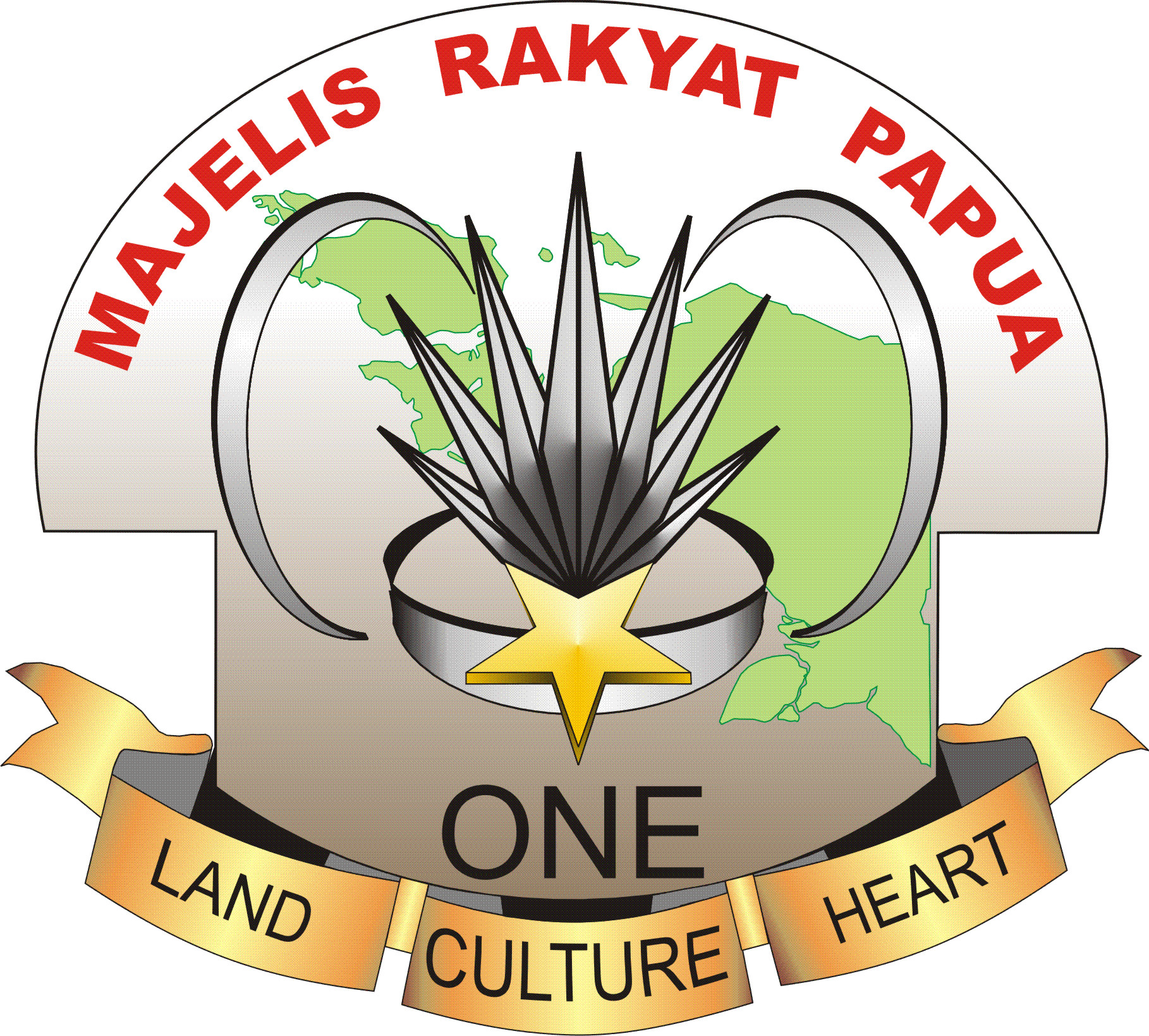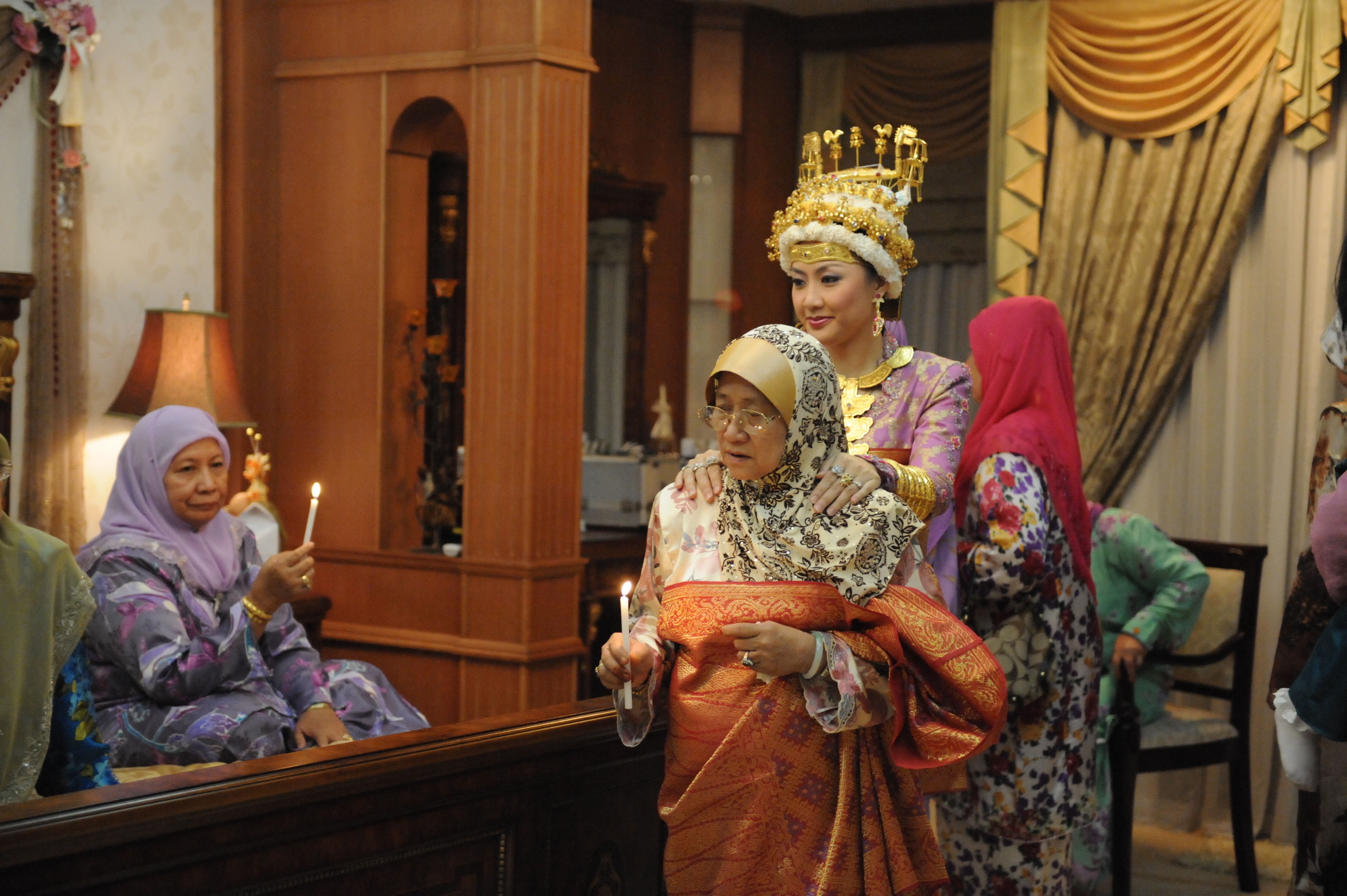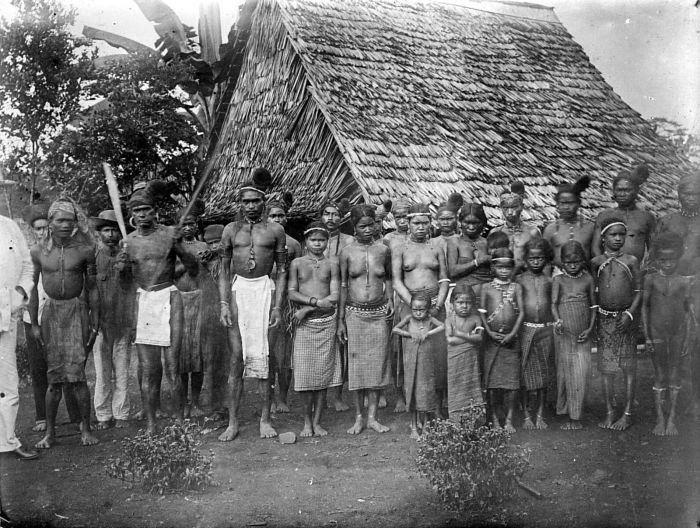|
Papeda (food)
Papeda, or ''bubur sagu'', is a type of congee made from sago starch. It is a staple food of the people indigenous to Eastern Indonesia, namely parts of Sulawesi, the Maluku Islands and coastal Papua. It is also widespread in Papua New Guinea and serves as the counterpart to central and western Indonesian cuisines that favour rice as their staple food. The starch is acquired by felling the trunk of a sago palm tree, cutting it in half, and scraping the soft inner parts of the trunk, the pith, producing a crude sago pith flour. This flour is then mixed with water and squeezed to leach the starch from the flour. The still-moist sago starch is usually stored in a container made of sago palm leaflets, called ''tumang'', in which it will keep for several months before spontaneous fermentation will turn it too acidic and unsuitable for making papeda. Depending on the variety and the growing conditions, it may take a sago tree five to over ten years to accumulate enough starch i ... [...More Info...] [...Related Items...] OR: [Wikipedia] [Google] [Baidu] |
Mackerel
Mackerel is a common name applied to a number of different species of pelagic fish, mostly from the family Scombridae. They are found in both temperate and tropical seas, mostly living along the coast or offshore in the oceanic environment. Mackerel species typically have deeply forked tails and vertical "tiger-like" stripes on their backs with an Iridescence, iridescent green-blue quality. Many are restricted in their distribution ranges and live in separate populations or Fish stocks, fish stocks based on geography. Some stocks Fish migration, migrate in large Shoaling and schooling, schools along the coast to suitable spawning grounds, where they spawn in fairly shallow waters. After spawning they return the way they came in smaller schools to suitable feeding grounds, often near an area of upwelling. From there they may move offshore into deeper waters and spend the winter in relative inactivity. Other stocks migrate across oceans. Smaller mackerel are forage fish for la ... [...More Info...] [...Related Items...] OR: [Wikipedia] [Google] [Baidu] |
Papua Province
Papua is a province of Indonesia, comprising the northern coast of Western New Guinea together with island groups in Cenderawasih Bay to the west. It roughly follows the borders of the Papuan customary region of Tabi Saireri, and is divided into eight regencies () and one city (''kota''), the latter being the provincial capital of Jayapura. It is bordered by the nation of Papua New Guinea to the east, the Pacific Ocean to the north, Cenderawasih Bay to the west, and the provinces of Central Papua and Highland Papua to the south. The province also shares maritime boundaries with Palau in the Pacific. Papua, along with the five other Papuan provinces, has a higher degree of autonomy level compared to other Indonesian provinces. Before 2003, the province (known as Irian Barat from 1962 to 1973 and Irian Jaya from 1973 to 2002) covered the entirety of Western New Guinea, a region also known as "Papua". In 2002, Papua adopted its current name and was granted a special autono ... [...More Info...] [...Related Items...] OR: [Wikipedia] [Google] [Baidu] |
Kadazan-Dusun
Kadazandusun (also written as Kadazan-Dusun or Mamasok) are the largest ethnic group in Sabah, Malaysia, an amalgamation of the closely related indigenous peoples, indigenous Kadazan people, Kadazan and Dusun people, Dusun peoples. "Kadazandusun" is an umbrella term that encompasses both the Kadazan and Dusun peoples. They are also known as Mamasok Sabah, meaning "indigenous people of Sabah". Kadazandusun tradition holds that they are the descendants of Nunuk Ragang. Kadazandusun is recognised as an indigenous nation of Borneo with documented heritage by the UNESCO, United Nations Educational, Scientific and Cultural Organization (UNESCO) since 2004. Kadazandusuns are part of the Bumiputera (Malaysia), bumiputera in Malaysia having been endowed with rights concerning land, rivers, education and maintaining their own customary laws. Etymology The "Kadazan" term is used among the Tangara/Tangaa' tribe on the west coast of Sabah to refer to themselves. Non-Tangara tribes with ... [...More Info...] [...Related Items...] OR: [Wikipedia] [Google] [Baidu] |
Bajau
The Sama-Bajau include several Austronesian ethnic groups of Maritime Southeast Asia. The name collectively refers to related people who usually call themselves the Sama or Samah (formally A'a Sama, "Sama people"); or are known by the exonym Bajau (, also spelled Badjao, Bajaw, Badjau, Badjaw, Bajo or Bayao). They usually live a seaborne lifestyle and use small wooden sailing vessels such as the '' perahu'' (''layag'' in Maranao), ''djenging'' (''balutu''), '' lepa'', and '' vinta'' (''pilang''). They also use medium-sized vessels like the '' jungkung'', ''timbawan'' and small fishing vessels like ''biduk'' and '' bogo-katik''. Some Sama-Bajau groups native to Sabah are also known for their traditional horse culture. The Sama-Bajau are the dominant ethnic group of the islands of Tawi-Tawi. They are also found in other islands of the Sulu Archipelago, coastal areas of Mindanao and other islands in the southern Philippines; as well as northern and eastern Borneo, Sulawesi, an ... [...More Info...] [...Related Items...] OR: [Wikipedia] [Google] [Baidu] |
Lun Bawang
The Lun Bawang (formerly known as Trusan Murut and Mengalong Murut or Southern Murut) is an ethnic group found in Central Northern Borneo. They are indigenous to the southwest of Sabah (Interior Division including Labuan) and the northern region of Sarawak (Limbang Division), highlands of North Kalimantan (Long Bawan , Krayan, Malinau Regency, Malinau, Kayan Mentarang National Park, Mentarang ) and Brunei (Temburong District). In the Malaysian state of Sarawak, the Lun Bawang (through the term ''Murut'') are officially recognised by the Constitution as a native of Sarawak and are categorised under the Orang Ulu people; whilst in the neighbouring state of Sabah and Krayan, Krayan highland in Kalimantan, they are sometimes named ''Lundayeh'' or ''Lun Daye''. In Brunei, they are also identified by law as one of the 7 natives (Indigenous peoples of Brunei, indigenous people) of Brunei, through the term ''Murut''. Nevertheless, in Sabah, Kalimantan, and Brunei, the term Lun Baw ... [...More Info...] [...Related Items...] OR: [Wikipedia] [Google] [Baidu] |
Bisaya (Borneo)
The Bisaya are a group of indigenous people from the northwest coast of East Malaysia and Brunei, on the island of Borneo. Their populations are concentrated around the towns of Beaufort and Kuala Penyu in southern Sabah (where they are included under the Kadazan-Dusun group of peoples), Labuan Federal Territory, and in Limbang District of Sarawak (in which they are grouped under the Orang Ulu designation). The Bisaya tribe bears many similarities to the Tatana Dusun tribe, especially in terms of language, as there is a high degree of mutual intelligibility between the two groups. Nowadays, most Bisaya in Sabah are Muslim, while those living in Sarawak are mostly Christians. In Brunei, they are referred to as ''Dusun'', ''Jati Dusun'', and ''Bisaya''. Origin and etymology Several theories have been put forward by various researchers regarding the origins of the name of the Bisaya people. H. Otley Beyer in 1926, Hester E.D. in 1954, and Harrison in 1956 suggested that th ... [...More Info...] [...Related Items...] OR: [Wikipedia] [Google] [Baidu] |
Bruneian Malay People
Bruneian MalaysBrunei Malay in its various forms can be identified with a nation, an ethnic group and a region. (, Jawi alphabet, Jawi: ) are a native Malays (ethnic group), Malay ethnic group that lives in Brunei, the Federal Territories of Malaysia, federal territory of Labuan, the southwestern coast of Sabah and the northern parts of Sarawak. The Bruneian Malays are a subgroup of the larger ethnic Malays (ethnic group), Malay population found in the other parts of the Malay World, namely Peninsular Malaysia and the central and southern areas of Sarawak including neighbouring lands such as Singapore, Indonesia and Southern Thailand, having visible differences especially in language and culture, even though they are ethnically related to each other and follow the teachings of Islam. All Bruneian Malays who are born or domiciled in East Malaysia even for generations before or after the independence of the states of Sabah and Sarawak from the British Empire through the formation ... [...More Info...] [...Related Items...] OR: [Wikipedia] [Google] [Baidu] |
Seram
Seram (formerly spelled Ceram; also Seran or Serang) is the largest and main island of Maluku province of Indonesia, despite Ambon Island's historical importance. It is located just north of the smaller Ambon Island and a few other adjacent islands, such as Saparua, Haruku, Nusa Laut and the Banda Islands. Geography and geology Seram is traversed by a central mountain range, the highest point of which, Mount Binaiya, is covered with dense rain forests. Its remarkably complex geology is because of its location at the meeting of several tectonic microplates, which have been described as "one of the most tectonically complex areas on Earth". Seram falls on its microplate, which has been twisted around by 80° in the last 8 million years by the relatively faster movement of the Papua microplate. Meanwhile, along with the northward push of the Australian Plate, this has resulted in the uplift that gives north-central Seram peaks of over 3000 m. On the island, there are import ... [...More Info...] [...Related Items...] OR: [Wikipedia] [Google] [Baidu] |
Alifuru
Alfur, Alfurs, Alfuros, Alfures, Aliforoes, Alifuru or Horaforas (in Dutch, ''Alfoeren'') is a broad term historically used during the Portuguese seaborne empire. The term was primarily associated with communities from the Arafura Sea area.The Alifuru people are indigenous Melanesian inhabitants of the Maluku Islands in eastern Indonesia.Traditionally associated with regions such as Seram, Buru, and the Kei Islands, the Alifuru are considered part of the broader Melanesian cultural and genetic continuum. While many speak Austronesian languages and have integrated aspects of Malay-Indonesian culture Etymology Several origins for the term Alfur have been proposed, including from Spanish, Portuguese, and even Arabic. The most likely hypothesis however is that it originated from Tidorese ''halefuru'', a compound composed of the stems ''hale'' "land" and ''furu'' "wild, savage". From Tidore it was adopted and used by Malay traders and the Portuguese, Spanish and Dutch adventurers a ... [...More Info...] [...Related Items...] OR: [Wikipedia] [Google] [Baidu] |
Central Papua
Central Papua, officially the Central Papua Province () is an Indonesian Provinces of Indonesia, province located in the central region of Western New Guinea. It was formally established on 25 July 2022 from the former eight western regencies of the province of Papua (province), Papua. It covers an area of 61,072.91 km2 and had an officially estimated population of 1,472,910 in mid 2024 (comprising 784,670 males and 688,240 females).Badan Pusat Statistik, Jakarta, 28 February 2025, ''Provinsi Papua Tengah Dalam Angka 2025'' (Katalog-BPS 1102001.94) It is bordered by the Indonesian provinces of West Papua (province), West Papua to the west, the province of Papua (province), Papua to the north and northeast, by Highland Papua to the east, and by South Papua to the southeast. The administrative capital is located in Wanggar District in Nabire Regency, although Timika (in Mimika Regency) is a larger town. Central Papua are bordered by seas in the north and south. Nabire is situat ... [...More Info...] [...Related Items...] OR: [Wikipedia] [Google] [Baidu] |
South Papua
South Papua, officially the South Papua Province (), is an Indonesian Provinces of Indonesia, province located in the southern portion of Western New Guinea, Papua, following the borders of the Papuan customary region of Anim Ha. Formally established on 25 July 2022 and including the four most southern regencies that were previously part of the province of Papua (province), Papua and before 11 December 2002 had been a single larger Merauke Regency, it covers a land area of 117,849.16 km2, about the same area as Pennsylvania (or 90% of that of England). This area had a population of 513,617 at the 2020 Census,Badan Pusat Statistik, Jakarta, 2021. while the official estimate as at mid 2024 was 542,075 (281,466 males and 260,609 females),Badan Pusat Statistik, Jakarta, 28 February 2025, ''Provinsi Papua Selatan Dalam Angka 2025'' (Katalog-BPS 1102001.93) making it the least populous province in Indonesia. It shares land borders with the separate nation of Papua New Guinea to th ... [...More Info...] [...Related Items...] OR: [Wikipedia] [Google] [Baidu] |
West Papua Province
West Papua (), formerly Irian Jaya Barat (West Irian), is an Indonesian Provinces of Indonesia, province located in Indonesia Western New Guinea, Papua. It covers most of the two western peninsulas of the island of New Guinea: the eastern half of the Bird's Head Peninsula (or Doberai Peninsula) and the whole of the Bomberai Peninsula, along with nearby smaller islands. The province is bordered to the north by the Pacific Ocean, to the west by Southwest Papua Province, the Halmahera Sea and the Ceram Sea, to the south by the Banda Sea, and to the east by the province of Central Papua and the Cenderawasih Bay. Manokwari is the province's capital and largest city. With an estimated population of 578,700 in mid-2024 (comprising 304,140 males and 274,560 females), West Papua is the second-least-populous province in Indonesia after South Papua, following the separation off in December 2022 of the western half of the Bird's Head Peninsula to create the new province of Southwest Papua, ... [...More Info...] [...Related Items...] OR: [Wikipedia] [Google] [Baidu] |









